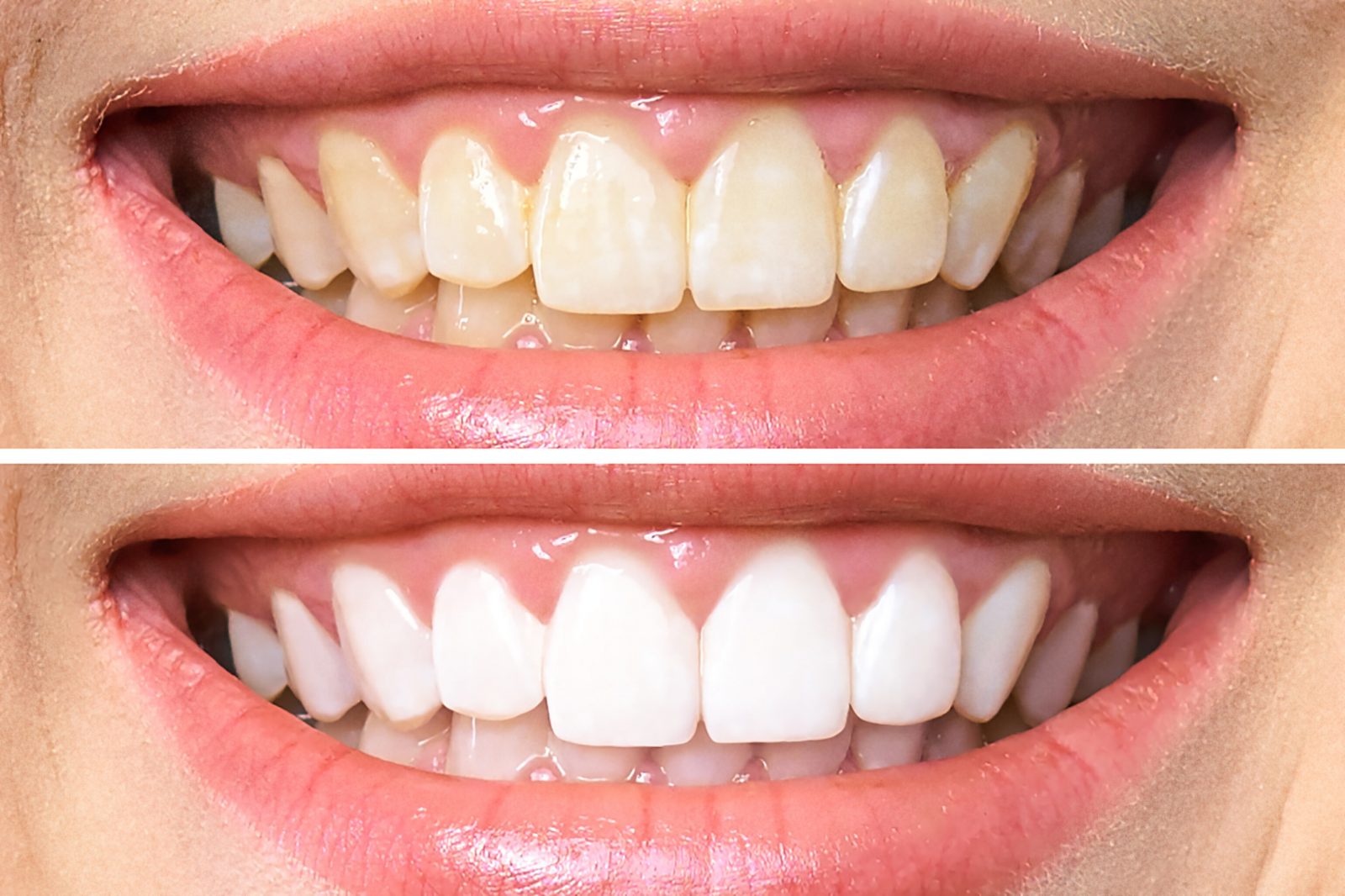 Photo Credit: Shutterstock
Photo Credit: Shutterstock
The second we see our teeth turn yellow we tend to run to buy at-home whitening strips & kits. Why? The reality is that store-bought whitening methods are a cheaper and more convenient alternative. That said, they have become popular over time. The main concern of whitening strips is damage to your teeth. To ease your mind on these worries, Haute Beauty sat down with some of our experts to discuss if whitening strips & kits actually do as they claim or are they in fact, damage your teeth. Here’s what they had to recommend:
Dr. Steven Davidowitz | Smile | New York
Professional teeth whitening done in a dental office setting is quicker, more effective, and safer than most “do it yourself,” at-home teeth strips and kit whiteners. In a dental office, we are able to protect the areas that should not have gel placed on them (the gums and root surfaces). We are, therefore, able to use much stronger and effective teeth whitening gels than the at-home strips and kit alternatives.
For more information on Dr. Davidowitz, visit his website, Instagram, or Facebook!
Dr. Brittany Dickinson | Smile | Chicago
Over-the-counter whitening strips and kits promise quick, dramatic results with no damage to your teeth. Sounds a little too good to be true? Well, like any ad campaign, these products exaggerate their abilities. The store-bought process is fairly quick, you’ll need to use the products twice a day for two weeks. In comparison, an in-office treatment like Zoom gives a similar result in 2 hours.
For the busy guests we take care of, two weeks versus two hours can seem like a lifetime! While these generic products don’t exactly damage your teeth, they are a rectangular shape that pushes whitening gel to your gums. This typically causes a chemical burn on the gums which is painful and sometimes can cause bleeding. Any custom in-office treatment or bespoke trays for at-home use are designed to protect the gums and have the whitening gel only contact your teeth.
As far as the promised, “dramatically whiter” results in most over-the-counter products claim, this simply doesn’t happen for most people’s smiles. Any over-the-counter product, even if used exactly as directed, will only whiten your teeth by two shades. In comparison, a professional grade product used for the same amount of time would brighten your smile at least four or more shades… now that’s a DRAMATIC brightening! In general, think of these store-bought whitening strips like any skincare product. The ones you buy over the counter work (kind of), but the products prescribed from your dermatologist will get you the truly noticeable results you are dreaming of!
For more information on Dr. Dickinson, visit her website, Instagram, or Facebook!
Dr. Michelle Luis | Smile | North Miami
Over-the-counter teeth whitening products, as well as in-office whitening products that contain a percentage of peroxide as the active whitening ingredient, are not harmful to your teeth. Teeth sensitivity is common and there remains a misconception that whitening is harmful to healthy teeth and gums. However, the important word here is “healthy.” If you have been diagnosed with periodontal disease, or have been told by your dentist that you have substantial tooth decay, whitening can cause pain and increased sensitivity in these circumstances. As a dentist, I highly recommend patients with underlying tooth and gum disease, to take care of their dental work prior to trying any whitening products.
There are some whitening products that have physically abrasive ingredients, such as the popular charcoal products, and these can actually damage healthy teeth enamel because they remove small layers of your enamel and this may expose the inner part of your teeth, called Dentin. Dentin has a yellow look to it, and if this is exposed, your teeth will always look yellow, and consequently, you will have increased teeth sensitivity.
Another frequent concern with any type of whitening product is when the gums turn white. This is called blanching. However, gums will turn back to the normal pink color within 24 hours. If you chose to whiten your teeth at home, and not at a dental office, here are a few tips to safely use at-home whitening products (anything from the strips to do it yourself trays with lights): start with short time increments, use smaller amounts of the gel that are recommended, and increase the frequency of use. A great trip to help the sensitivity, if it does occur, is to take Sensodyne toothpaste and rub it all over your teeth like you would any ointment. Leave the gel on for a minimum of 10 minutes, or even overnight. At-home whitening is best when used as maintenance after an office session. In-office whitening will always be the best way to get the fastest, safest, and most vibrant results.
For more information, visit Dr. Michelle Luis’s website, Instagram, or Facebook!
For more information, visit Dr. Brian A. Levine's social media:

























